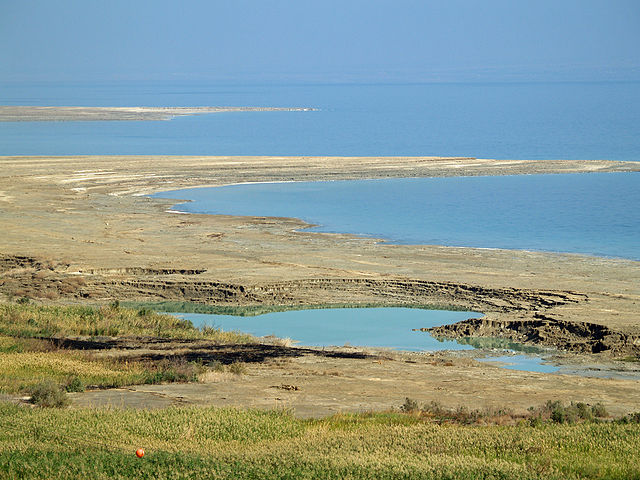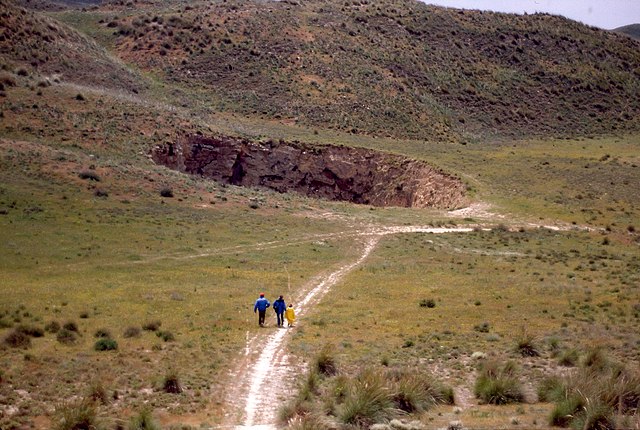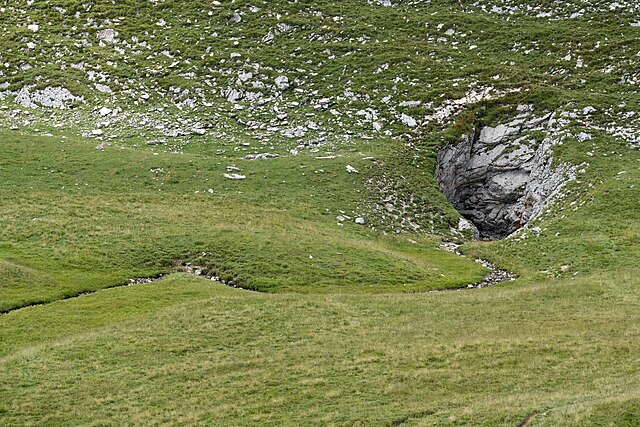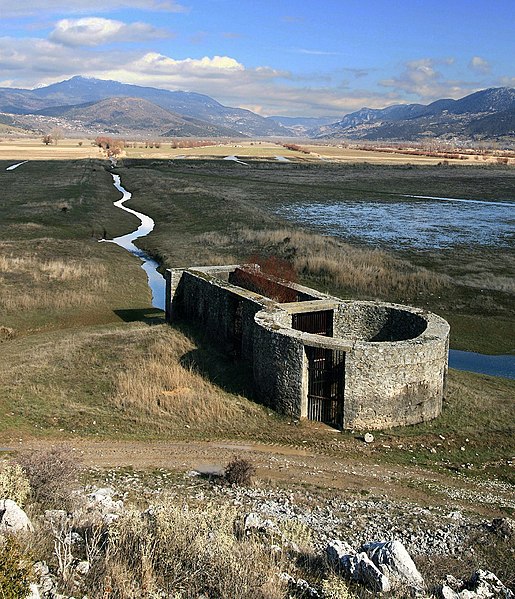A sinkhole is a depression or hole in the ground caused by some form of collapse of the surface layer. The term is sometimes used to refer to doline, enclosed depressions that are also known as shakeholes, and to openings where surface water enters into underground passages known as ponor, swallow hole or swallet. A cenote is a type of sinkhole that exposes groundwater underneath. Sink and stream sink are more general terms for sites that drain surface water, possibly by infiltration into sediment or crumbled rock.
The Red Lake sinkhole in Croatia
Sinkholes near the Dead Sea, formed when underground salt is dissolved by freshwater intrusion, due to continuing sea-level drop.
Collapse sinkhole in Chinchón, Spain.
Collapse formed by rainwater leaking through pavement and carrying soil into a ruptured sewer pipe.
A ponor is a natural opening where surface water enters into underground passages; they may be found in karst landscapes where the geology and the geomorphology is typically dominated by porous limestone rock. Ponors can drain stream or lake water continuously or can at times work as springs, similar to estavelles. Morphologically, ponors come in forms of large pits and caves, large fissures and caverns, networks of smaller cracks, and sedimentary, alluvial drains.
Ponor Monte de Fóses
The Dobra River enters a 17 km long cave system at Đulin ponor in Ogulin, Croatia.
Polje of Feneos, Greece, lake until late 19. Century. Rain showers flood large parts even today
Closeup of ponor in Câmpeneasca cave near Izbuc village, Romania








